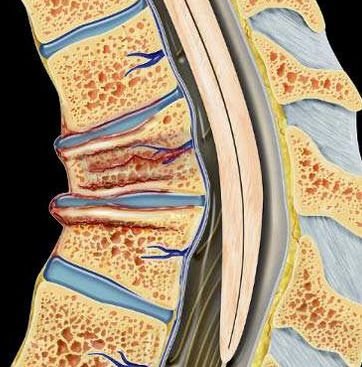Thoracic, Lumbar, and Sacral Spine Fractures
Thoracic, Lumbar, and Sacral Spine Fractures
Thoracic, lumbar, and sacral spine fractures are serious injuries that often result from high-energy trauma such as road traffic accidents, falls from heights, industrial injuries, and violence. In Bangladesh, the incidence of such spinal fractures is on the rise due to increasing urbanization, construction activities, lack of road safety, and minimal use of protective gear in workplaces. These fractures may lead to instability, deformity, spinal cord injury, and long-term disability. Prompt diagnosis and proper surgical intervention can drastically improve patient outcomes. Dr. Md. Nafaur Rahman, one of the leading pediatric and spinal neurosurgeons in Bangladesh, provides expert care in managing these complex injuries using modern, evidence-based techniques. Overview of Spine Anatomy & Fracture Types The thoracic spine (T1–T12), lumbar spine (L1–L5), and sacral spine (S1–S5) form the middle to lower back and are responsible for weight-bearing, balance, and movement. Fractures in these regions are classified as: Compression fractures: Most common in osteoporotic or trauma patients Burst fractures: Vertebral body shatters under extreme force Flexion-distraction injuries (Chance fractures): Caused by sudden flexion in vehicle crashes Fracture-dislocations: Complete disruption of bone and ligament structures Sacral fractures: Often missed but may cause nerve injury and bladder/bowel dysfunction Causes of Spine Fractures in the Bangladesh Setting Motorbike or bus accidents on highways or city roads Falls from rooftops, trees, or unprotected buildings Heavy lifting or falling loads in factories and construction sites Crush injuries from machinery or vehicles Physical abuse or child labor-related trauma in underprivileged settings Osteoporosis in elderly patients leading to low-impact fractures In children, such fractures often go unnoticed due to communication barriers and limited access to pediatric spinal care. Common Symptoms Severe back pain and stiffness Visible deformity or swelling over the spine Neurological deficits (numbness, weakness, or paralysis) Loss of bladder or bowel control (especially in sacral fractures) Restricted mobility or inability to stand or walk Shock or unconsciousness in polytrauma patients Diagnostic Strategy in Bangladesh Dr. Nafaur Rahman employs a multi-modal diagnostic approach: Spine X-rays: For initial evaluation in emergency settings CT Scan with 3D Reconstruction: Gold standard for detecting fracture pattern MRI: Critical for assessing spinal cord injury, ligament damage, and soft tissue swelling Neurological Evaluation (ASIA Impairment Scale): To grade severity and guide management In rural and district hospitals where imaging is limited, early referral to specialized centers like NINS or BPNC is essential. Management Options: Conservative vs Surgical ✅ Non-Surgical Treatment (for Stable Fractures) Indicated in compression fractures without neurological involvement Bed rest, spinal braces, and gradual mobilization under supervision Pain management and physiotherapy Close radiological monitoring to avoid progressive collapse ✅ Surgical Management (For Unstable or Neurologically Compromised Fractures) Surgery is the mainstay in: Burst fractures with spinal canal compromise Fracture-dislocations with cord compression Flexion-distraction injuries Sacral fractures with nerve damage Non-healing or progressing fractures despite bracing Surgical Options Offered by Dr. Nafaur Rahman: Posterior spinal instrumentation and fusion Anterior corpectomy with cage reconstruction Minimally invasive spine surgery (MISS) when appropriate Pedicle screw fixation in thoracolumbar injuries Sacral decompression and fixation for pelvic stability Neuro-monitoring during surgery for spinal cord protection In children, growth-friendly techniques and short-segment fixation are used to preserve long-term development. Postoperative Care & Rehabilitation ICU care for polytrauma or high-risk patients Post-surgical bracing for 6–12 weeks Early physiotherapy to prevent complications and regain strength Pain and spasticity management Regular follow-up with spine imaging to monitor healing and hardware placement Prognosis Excellent outcomes when treated promptly and correctly Neurological recovery depends on the initial severity of spinal cord damage Most patients can return to school/work after rehabilitation Delayed or neglected cases may lead to permanent deformity or disability Why Choose Dr. Md. Nafaur Rahman? ✅ One of the most experienced spinal trauma surgeons in Bangladesh ✅ Expert in both adult and pediatric spinal injuries ✅ Uses advanced instrumentation and fusion techniques ✅ Operates at NINS and private neurocare centers with modern facilities ✅ Proven success in high-risk and complex spinal surgeries ✅ Offers affordable, globally-aligned treatment options in Bangladesh Contact Dr. Md. Nafaur Rahman for Spine Fracture Consultation 📌 Assistant Professor, Pediatric Neurosurgery, National Institute of Neurosciences & Hospital (NINS) Chief Consultant, Bangladesh Paediatric Neurocare Centre 📞 Appointment & Emergency Spine Care: 📱 +8801912988182 | +8801607033535 🌐 Visit: www.neurosurgeonnafaur.com










